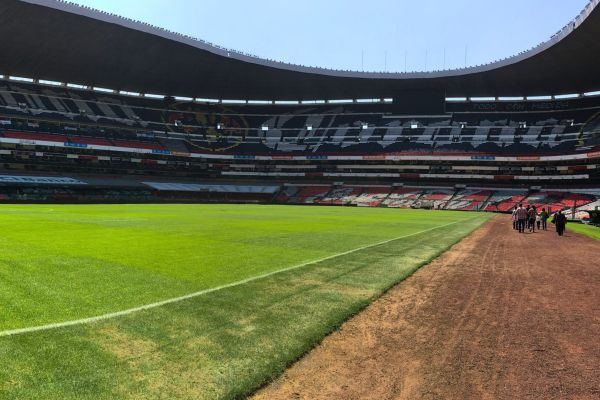When referee Romualdo Arppi Filho blew the final whistle at Estadio Azteca on June 29, 1986, he signaled more than just Argentina’s World Cup victory — he closed the curtain on a tournament that would be remembered for many things. Most famously, Diego Maradona’s Hand of God goal, controversial and legendary in equal measure. But another legacy was born during that summer in Mexico, one that didn’t involve a ball or a player: The Mexican Wave.
For many watching from outside the Americas, it was the first time they’d seen fans rise and fall in perfect rhythm, creating a ripple of human movement that swept around the stadium like clockwork. Naturally, since the World Cup was in Mexico, it became known as The Mexican Wave. But here’s the twist — the wave didn’t actually start in Mexico. Its roots are north of the border, in the USA.
What is the Wave?
The wave is a spontaneous and often contagious display of crowd energy. It works like this: one section of fans jumps to their feet, throws their arms in the air, and sits back down, triggering the next section to do the same — creating a rolling motion that circles the stadium like the hand of a giant clock. The effect? A living, breathing wave of people, rising and falling in unison.
Where Did It Come From?
The man credited with popularizing the wave is a cheerleader named Krazy George Henderson. Known for his wild antics and booming drum, Krazy George got fans at a 1981 Oakland A’s baseball game to participate in what is widely considered the first documented wave. But even before that, he had been experimenting with synchronized crowd movements during college sports events in the late 1970s.
Soon, the wave caught on in American sports culture — particularly in college football and NFL games. The story goes that Mexican students, having witnessed the wave at U.S. sporting events, brought the idea back home. And when the 1986 World Cup rolled into town, the perfect storm of global attention, packed stadiums, and passionate fans helped the wave explode into a worldwide phenomenon.
Since most of the world saw it for the first time in Mexico, the name Mexican Wave stuck.
The Wave Today
Love it or roll your eyes at it, the wave is still alive and spinning in stadiums around the world. Some say it adds to the atmosphere, a playful break in tense moments.
But some, like myself, would argue that the wave often shows up when the game gets slow and boring. I’ve seen it firsthand — when the crowd starts losing interest, and the stadium fills with neutrals, like at International tournaments such as the World Cup. For those truly invested in the action on the field, no matter how dull it may be, it can get a bit annoying to see people standing up and sitting back down every minute or so.
Still, the Wave works best in circular or bowl-shaped stadiums where the movement can roll smoothly from section to section. In more square or fragmented venues, the wave can stumble, especially if there are gaps in the crowd. And depending on the vibe (and the country), participating in a wave might mean getting caught in a rain of beer or mystery liquids as fans launch their drinks skyward in celebration.
Coming Full Circle

The iconic Mexican Wave still makes its rounds in stadiums around the world, adding to the energy and excitement of sporting events. Whether you love it or groan when it starts, it’s a reminder of how fans can shape the atmosphere of the game. And next time you find yourself caught up in the wave, just remember — it’s not Mexican...but it sure feels like it!
Want to know more about iconic stadiums? Check out our Estadio Azteca page and find out how it will break a record in the 2026 World Cup.
